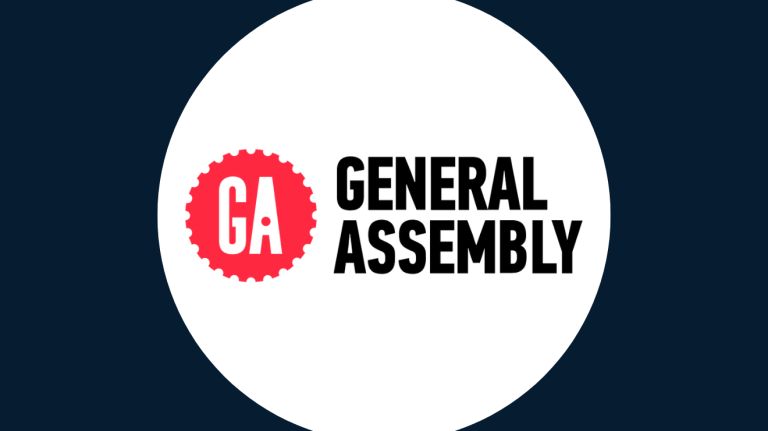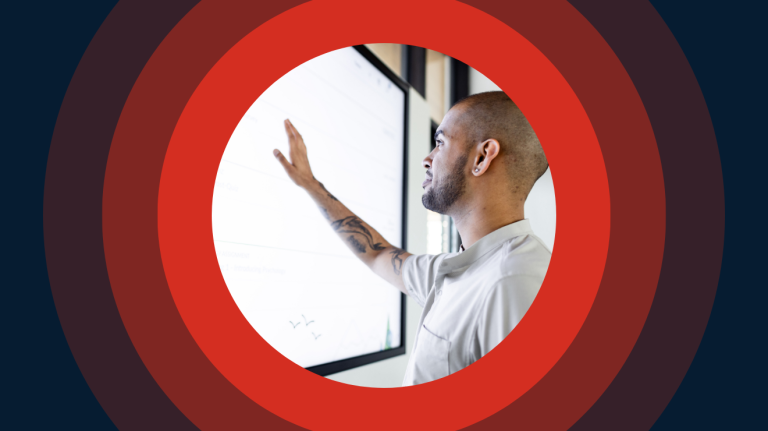Employers have always known that learning drives growth, but workplace education hasn’t always kept pace with the way people actually build skills. Too often, training gets reduced to a set of courses or compliance modules: complete the session, check the box, move on.
The truth is, learning doesn’t happen in tidy, one-off moments. Skills develop over time, through structured programs, feedback, practice, and collaboration. Forward-looking organizations are rethinking the systems that support that growth, and they’re not alone: 89% of learning and development professionals say proactively building employee skills is key to navigating the future of work.
A learning management system (LMS) is central to that shift. When designed around skills and supported by modern capabilities like AI, data-driven insights, and personalization, a learning management system becomes more than a content hub. It becomes the foundation for scalable, connected, career-relevant education that works for both employees and organizations.
Read on to explore how employers are investing in workplace education and how a skills-first LMS can support success.
Building strong foundations with employee onboarding
Onboarding sets the tone for an employee’s entire journey. It’s more than orientation; it’s an early chance to build confidence, connect people to their roles, and start developing the skills they’ll need to succeed.
A modern LMS strengthens onboarding by making it both structured and flexible. Interactive modules and embedded assessments help employees ramp quickly. Personalized pathways show new hires exactly how their training connects to their role. AI-enabled content creation allows teams to refresh and expand onboarding programs without overwhelming administrators.
The result? Onboarding that feels less like a hurdle and more like a launchpad for long-term growth.
Credentialing, licensing, and compliance
For employees, credentials represent progress and open doors to career advancement. For organizations, they reduce risk and demonstrate readiness in regulated industries. Both are vital parts of workplace education.
A skills-first LMS should make this easier. By integrating with credentialing platforms like Parchment Award Digital Badges, employees earn recognition that carries career value while organizations maintain the compliance records they need. Automated reminders, dashboards, and audit-ready reporting help keep certifications current, so no one falls behind.
It’s a powerful combination: employees know their growth is recognized, and organizations operate with confidence.
“By partnering with universities and using a common, shared language, companies are able to create a dedicated funnel of new employees with skills that directly map to those they need, reducing onboarding time and the need for supplementary on-the-job training. Additionally, in our quickly evolving tech economy, these same partnerships enable upskilling and reskilling of employees throughout their careers.”
– Ryan Lufkin, Vice President of Global Strategy at Instructure
Mentorship and leadership development
Technical training builds expertise, but it doesn’t prepare employees for every challenge. Leadership, communication, and collaboration remain among the most in-demand workplace skills—and they don’t develop in a single training session.
An LMS can help by embedding leadership development into daily learning. Role-based pathways make the journey visible. Mentorship programs provide structure and accountability. Skills dashboards highlight progress so employees see themselves advancing. For organizations, this means stronger pipelines for leadership and greater retention of top talent.
Fostering a culture of continuous learning
The half-life of skills is shrinking, and new priorities can emerge overnight. Organizations that rely only on annual training cycles can’t keep pace.
That’s where continuous learning comes in. A modern LMS supports this shift by embedding learning into the flow of work. Mobile-first access makes training available anywhere. Accessibility and multilingual features extend opportunities to all employees. And AI-driven recommendations surface the right content at the right time, keeping learning relevant instead of overwhelming.
A culture of continuous learning doesn’t come from doing more training. It comes from delivering learning that is connected, contextual, and skills-focused.
5 benefits of using an LMS for workplace learning
-
Engagement and retention: People stay motivated when training feels connected to their goals. Skills-based pathways and adaptive recommendations keep learning relevant, which leads to stronger engagement and makes employees more likely to stay and grow with the organization.
-
Upskilling and reskilling: The skills employees need today won’t always be the ones they need tomorrow. A modern LMS helps organizations create opportunities for employees to grow, whether that means deepening expertise in their current role, moving into new responsibilities, or preparing for leadership.
Learn more about effectively upskilling and reskilling employees. -
Flexibility: Today’s workforce is mobile, busy, and diverse. An LMS gives employees the freedom to learn on their own time—whether on a laptop or a phone—while leaders track progress and outcomes in real time. It’s training that adapts to how people actually work.
-
Personalization: No two learners are the same. A strong LMS can tailor pathways by role, department, or skill level so training always feels relevant and practical. That level of personalization helps employees see the direct value of their learning.
-
Real-time insights: Real-time data turns learning into a measurable advantage. An LMS with built-in analytics helps organizations see how training drives engagement, skill development, and performance. Clear dashboards surface trends, highlight gaps, and give leaders the confidence to make data-driven decisions that improve outcomes.
3 questions to ask when choosing an LMS
Is it adaptable and scalable?
Your workforce won’t stay the same size or structure forever. Look for a system that can grow with you without creating extra work. The right LMS should integrate with HRIS, ERP, and SSO so it fits seamlessly into your existing ecosystem.
Is it reliable and secure?
Trust is non-negotiable. Employees need confidence that their data is protected, and leaders need assurance that systems won’t fail at critical moments. Enterprise-grade safeguards like encryption, role-based access, and proven uptime guarantees make the difference between “nice to have” and “mission critical.”
Does it give you the right insights?
Learning impact isn’t about completions; it’s about growth. An LMS should provide real-time dashboards that show skill progress, program outcomes, and learning ROI, helping you make decisions with confidence and demonstrate the value of learning to stakeholders.
A skills-first approach to workplace learning
Workplace education has always been about preparing people for success. What’s changing is the urgency, the expectations, and the tools available to make it possible.
A skills-first LMS, built with AI-powered efficiency, scalable delivery, and real-time insights, helps organizations move beyond check-the-box training and toward learning that drives measurable impact.
When education is designed around skills, employees gain more than knowledge. They gain opportunities to grow in their careers. And organizations gain the workforce agility and performance they need to compete in a rapidly changing world.
To see how this comes to life in practice, explore Canvas Career, Instructure’s skills-based LMS designed to help organizations deliver scalable, personalized, career-relevant learning.




